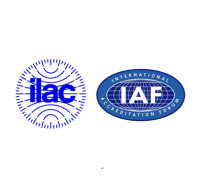Clause 7.1.2 mandates that the inspection body shall have “adequate instructions of inspection planning, sampling and inspection techniques”. What is the meaning of “inspection planning, sampling and inspection techniques”? Please provide examples of each of these.
STANDARD: ISO/IEC 17020 · CLAUSE: 7.1.2 · TOPIC: Documenting instructions on inspection planning, sampling and inspection techniques
Answer:
First, the Standard does not mandate that the inspection body shall have adequate instructions of inspection planning, sampling and inspection techniques. The only situation where these are required is where the absence of such instructions could jeopardize the effectiveness of the inspection process. So e.g., for a typical in-service inspection of a crane it would seem inappropriate to have any detailed planning of which welds to inspect or which parts of the crane to sample. These decisions are best left to the inspector’s professional judgment, on-site after talking to the operator and based on the inspector’s experience of similar equipment. An example of an inspection type where inspection planning would be appropriate would be inspections during construction or fabrication. Inspection points/hold points should be agreed before the project starts, probably in collaboration between the design engineer, the site engineer and the inspection body. Day-to-day scheduling of inspections also constitutes inspection planning. An example of sampling would be where a design requires a percentage of welds to be examined. In addition to the percentage there may be such terms as “representative sample”, “random sample”, “worst case sample”, “risk based sample” etc. All of these terms require technically appropriate sample choosing procedures, if the contract is to be met correctly. As an example, the inspector personally choosing which welds to examine cannot be considered random. Appropriate inspection techniques relate to choosing between techniques for a particular project where more than one technique is available. This may be part of contract review (see clause 7.1.5 of ISO/IEC 17020), and may also be referenced to the final sentence of clause 7.1.1. So, e.g., if a company offering non-destructive testing is asked to test for cracking in a fabricated metal item, they must have appropriate procedures for determining whether radiography, ultrasonic examination, magnetic particle or some other technique is appropriate, depending on details of the project. In a non-engineering situation, if you are inspecting a process, the aspects of the process that needs to be sampled need to be planned. The inspection techniques used for inspecting a process may include auditing, verification, interviewing of personnel etc.

